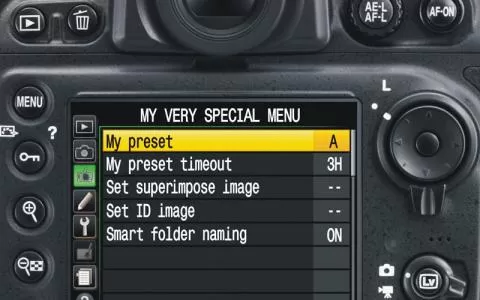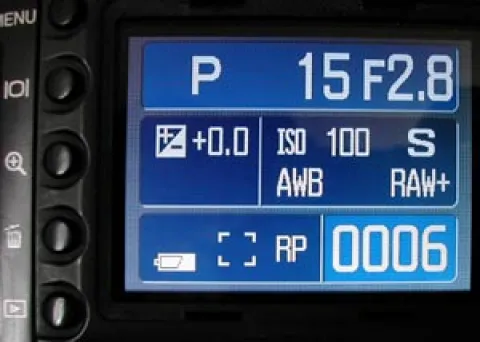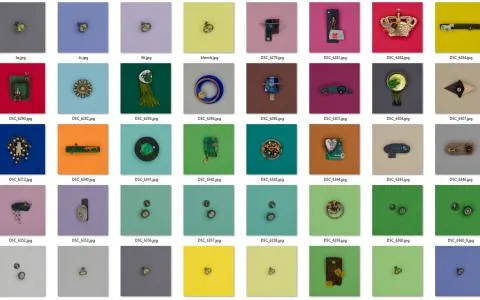Yes I stopped looking frantically at the LCD on the back of my digital cameras after each and every shot. And I think it has made me take better pictures.
One of the really great things about digital cameras compared to film cameras is their ability to show you the image the second you have shot it.
We have all been there and most still are: chimping. We set the camera to display the image we have just shot for a few seconds, and taking and image consists of these typical steps:
- see the subject with eyes
- see the subject through viewfinder (or on the LCD if using live view)
- focus
- compose
- expose
- look at picture on LCD
- repeat from 1
I used to do that on all my digital cameras, and I routinely had my cameras set up to display the most recent image for a few seconds.
A few years ago I observed myself paying less and less attention to the image on the LCD display and even finding the bright display annoying when I had the camera close to my eyes. I shut off the immediate image display, and now only have an image displaying when I press the play button on the back of the camera, which I actually rarely do nowadays. When I do it, it's typically done during a break in the shooting or after the first shot or two to quickly judge exposure and make sure my settings aren't completely off. It's not like I never look at the LCD, I just don't look after each shot or series of shots.
So now my steps for taking an image are fewer, and the loop is “tighter”:
- see the subject with eyes
- see the subject through viewfinder (or on the LCD if using live view)
- focus
- compose
- expose
- repeat from 5 (or sometimes 4 or even 3)
I shoot more continuously and don't take my eye away from the viewfinder when I have shot a single frame or shoot several images in a row. When I finally take the camera away from my eye, I can keep looking at the subject and quickly fire off another shot if a new situation arises.
From Wikipedia
Chimping is a colloquial term used in digital photography to describe the habit of checking every photo on the camera display (LCD) immediately after capture.
The disadvantages of chimping
It breaks concentration. You stop looking at your subject
It uses battery. Actually quite a lot
It's not necessary. Trust your own skills. Your images are great!
The battery issue isn't a biggie. I have no problems getting my batteries to last – except maybe on my Fuji X100, which is a notorious battery hog, and really eats through power. I almost never use the back LCD on the Fuji, neither for chimping, reviewing images or for composing and shooting.
The concentration and the self confidence, on the other hand, are big issues, and concentrating on shooting and trusting that I get what I want without reviewing the images has produced more good images and left me with more keepers than chimping and reviewing has done.
As I have grown confident with my cameras, I don't even need to review the pictures for proper exposure. I generally trust that I get what I want, and use settings that work and that gives the results I like. I also shoot RAW and even though exposure is still critical, it's not as critical as if I shot pure JPG.
Will chimping make you better?
No, it won't! All that you get by chimping is assurance that what you shot is probably OK. If it isn't, well you can't do much about it anyway – unless you are shooting a static setup, a landscape or a similar subject that doesn't change - or maybe a model who can pose again, in which case you are still better off looking at the model through the viewfinder and pressing the shutter when the pose is right.
Once you have pressed the shutter release, the image is captured, and if it was a good shot, reviewing it won't make it better. If it failed, it failed. Looking at it won't save it, while looking through the viewfinder and being ready to press the shutter again actually might enable you to grab a better version.
So keeping focus on your subject can produce more good pictures.
Are there no advantages?
Sure it can be fine to chimp. It proves to you that there's something in the box, and that the images aren't all off. So looking at the display isn't forbidden. Even I do that now and then.
When shooting with one or more flashes I like to check the lighting setup, but only until I'm satisfied. After that I just shoot away. Other situations where exposure isn't straightforward like shooting at night with long exposures, I also chimp. After 30 seconds of exposure I usually want to see that I got what I expected and since the scene is still there, I can redo it if I'm not happy.
I also see quite a lot of photographers going through their images on the LCD after having shot a row. That can be nice too of course. It can be reassuring and let you know whether you did get something useful in series. You will often see pros do that after having shot at sports games, at events, on the red carpet or where they shoot. They can make sure they have something useful right away, but I wonder what they do if they haven't? Ask the players to play the particular game again or ask Clooney or Palthrow to take the stroll once more?
Social chimping
Personally I like to do what I call social chimping. That is sharing the images with the subject or other people involved in the shoot. This is a great way of ensuring that people trust you as a photographer and can relax with the conviction that you can actually get good pictures. The screen doesn't tell the whole story, but people can see that there's something useful there and that they don't look like idiots or their products don't look bad.
Personally I like to do what I call social chimping
But don't be fooled. The LCD is not a great place to judge the technical quality of an image, and even zooming to 100% can't always reveal a blurred or badly focused picture. You can use it as a base for a rough judgment, assess the composition, check the histogram for blown out highlights and make sure you aren't totally off, but you can never be absolutely sure that the image is perfect.
Eye sensors
Some cameras have eye sensors (they are actually more like face sensors), that “feel” the proximity of your face to the backside of the camera, and keeps the LCD shut off until you remove the camera from your eyes. Such sensors can keep the bright LCD from turning on while you are shooting.
My Fuji X100 has such sensors and my old and trusty Minolta 7D has too. I turn them off! I really don't like the camera trying to guess when and when not to display anything. The Fuji can also change between the internal LCD and the one on the back based on these sensors. Some people might love this type of automation, but I certainly don't.
Try it
Try turning off the LCD on your camera, and have it stay black until you need it, either for changing settings on the camera or for reviewing an image, checking the histogram, ensuring the right exposure or even controlling focus.
You can turn it off in the menu on almost all cameras, even most of the ones that use the LCD as a viewfinder like compacts and Point&Shoots. On my Nikon D5100 I simply turn the articulated LCD in towards the camera, and voila! There simply is no LCD to look at.
I think it will make you a better and more confident photographer.










